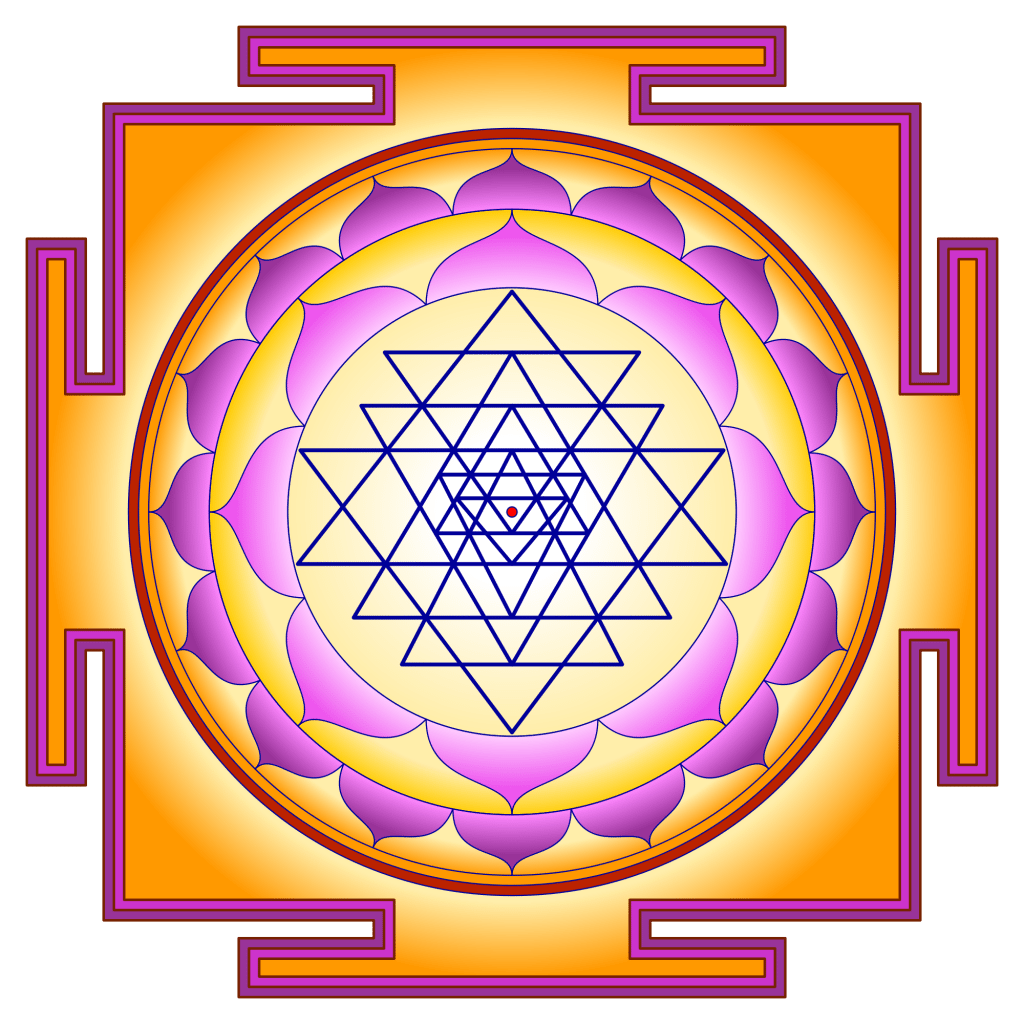Title: Sri Yantra
Author: Alloya Huckfield
Description: Sri Yantra
tags:
- yantra
- Spiritual
- mandala
icon: LiAsterisksri-yantra

In Hindu tradition, the Sri Yantra is considered one of the most powerful sacred geometric forms. It serves as both a meditation tool and a representation of the cosmos. When practitioners focus on the Sri Yantra, they typically begin at the outer edges and gradually move their attention toward the central point, symbolizing the journey from material existence to spiritual awakening.
The Sri Yantra stands as one of the most important and complex sacred geometric symbols in the Tantric tradition of Hinduism. Its name derives from Sanskrit, where "Sri" signifies wealth, prosperity, or abundance, and "Yantra" means instrument or machine—together representing an instrument for wealth or prosperity in both material and spiritual dimensions.
The Sri Yantra consists of an intricate arrangement of nine interlocking triangles centered around a central point called the Bindu. Four of these triangles point upward, representing the masculine divine energy (Shiva), while five triangles point downward, representing the feminine divine energy (Shakti). The triangles are arranged with mathematical precision to create 43 smaller triangles organized in distinct layers.
These interlocking triangles are surrounded by a lotus pattern with eight petals, enclosed within another 16-petaled lotus, which is further encircled by three concentric circles. The entire configuration is then contained within a square with four gates, one on each side. Each gate represents one of the four directions.
The construction of the Sri Yantra follows exact mathematical principles. The intersection points of the triangles must be precisely aligned, and even slight deviations would disrupt the yantra's energetic properties according to traditional beliefs. This mathematical precision makes the Sri Yantra remarkably difficult to draw correctly by hand.
At the deepest level, the Sri Yantra represents the cosmos and the human body simultaneously. The central Bindu symbolizes the primordial point of unity—the source from which all creation emerges and to which it eventually returns. This point represents the unity of Shiva (pure consciousness) and Shakti (dynamic energy).
The nine interlocking triangles represent the process of cosmic creation. Their intersections generate the multitude of forms that exist in the universe. Each layer of triangles corresponds to a particular aspect of existence:
- The outer triangles represent the physical world and its material manifestations.
- The middle layers symbolize psychological aspects including thoughts, emotions, and ego.
- The innermost triangles represent the subtlest aspects of consciousness.
The enduring appeal of the Sri Yantra lies in its remarkable synthesis of mathematical precision, spiritual symbolism, and aesthetic beauty—making it a profound representation of the interconnectedness between cosmic order and human consciousness.